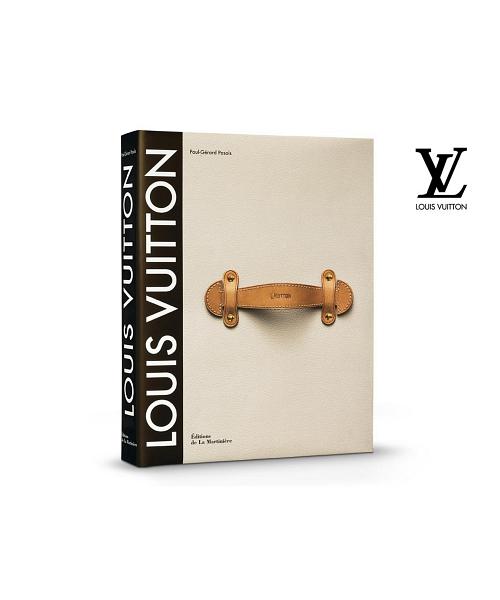Louis Vuitton 'The Birth Of Modern Luxury' - English Version
Shipping
We don't declare under-value and as 'gift' for customs.
Custom duties and VAT in your own country may apply and the seller cannot be held responsible for additional costs. Please check with your country’s customs office to determine what these additional costs will be prior to bidding/buying.
Returns
If the customer decides to cancel / withdraw he will bear the risk, cost of all shipping and return import duties of the seller. The item will be packed very well and will be shipped insured. Money will be returned on arrival of the parcel, after been checked.
In November 2012, Louis Vuitton and Les Éditions de La Martinière are set to publish an updated edition of the book Louis Vuitton, The Birth of Modern Luxury, which was released in October 2005. Available in a limited edition exclusively in Louis Vuitton stores, this elegant volume traces the history of the Maison, from its creation in 1854 to the present day. The exhaustive account offers unique insight into the developments and inventions of the brand which turned travel into an “art de vivre”. How did Louis Vuitton, which created the first modern luggage in 1854, become today’s global benchmark for luxury? This book with nearly 800 illustrations and original testimonials traces the irresistible and compelling rise of the world’s leading luxury brand. It details the evolution of a company that has always been in step with even ahead of its time, a legendary history that spans more than 150 years. In the mid-nineteenth century Louis Vuitton, the company’s founder, designed a revolutionary trunk. With a flat poplar frame covered in waterproof canvas, Vuitton’s trunk was elegant, functional, and light-weight. It was ideally suited to the new means of transport. Ine one stroke it made all previous trunks obsolete, and its success was instantaneous. As society’s elite discovered the new art of travel following the lead of the French Empress Eugénie and other monarchs, head of state, explorers, artists, and magnates the LV monogram appeared on the great ocean liners, in the Gobi Desert, and in the world’s grandest hotels. With Louis Vuitton, travel had acquired a soul.
- Written by Paul-Gérard Pasols, a longtime consultant to Louis Vuitton, with full access to the company's archives
- 540 pages
- 660 archive photographs and illustrations
- English version published by Abrams
- Published in October 2012
- With box
- Reference
- 999-31
- Designer
- Louis Vuitton
- Status
- Sold
- Year
- 2012
Louis Vuitton
Louis Vuitton (1821-1892) started his training apprenticing with a successful box-maker and packer named Monsieur Maréchal in 1837 in Paris. At this time box-making and packing was a highly respectable and refined craft. A specialist in this area had to custom-make all boxes to fit the goods they stored and had to personally load and unload these boxes for their rich clients. In only a few years, Vuitton was well-respected by Paris’ upper class in this craft, one of his clients being Napoleon’s wife. In 1854 he opened his own shop under the name of Louis Vuitton Malletier in Paris. His modern dirt-resistant and waterproof products were of such good quality, that they were soon in high demand. In addition, unlike previous domed shaped trunks, Vuitton’s were rectangular, making them stackable and far more convenient for shipping. One of the oldest names in the business, Louis Vuitton got his start as a layetier (packer) to Napolean III’s wife, Empress Eugénie. After years of studying the foundation of voyage-friendly baggage, Vuitton decided to deconstruct the model and build his own, originally designing airtight canvas trunks with flat bottoms - as opposed to the time’s rounded styles - for stacking and easy storage.
In 1854 he opened his own shop under the name of Louis Vuitton Malletier in Paris. His modern dirt-resistant and waterproof products were of such good quality, that they were soon in high demand. In addition, unlike previous domed shaped trunks, Vuitton’s were rectangular, making them stackable and far more convenient for shipping. In 1886, son Georges Vuitton (1857-1936) invented the revolutionary locking system that is still used today. When Louis Vuitton died in 1892, Georges took over the company. It was Georges who designed and established the iconic LV monogram. Today, the popular luxury brand can be found internationally and has expanded its products to include clothing, shoes, handbags, jewelry and timepieces.
The seventies found the brand expanding into the Asian market, with new stores in Japan, China, and South Korea. The company merged with Moët et Chandon and Hennessy in 1987, creating the luxury powerhouse anagram LVMH. Amazingly, it wasn’t until ten years later that they went into the ready-to-wear business, hiring New York designer Marc Jacobs in 1997, who immediately added an incredibly lucrative clothing business while bringing Vuitton up-to-date by collaborating with such artists as Stephen Sprouse (who irreverently graffitied bags) and later Takashi Murakami (who added a bubble-gum anime humor to the line).
Today, the label encompasses ready-to-wear, watches, jewelry, home, and, of course, that want-worthy luggage.
